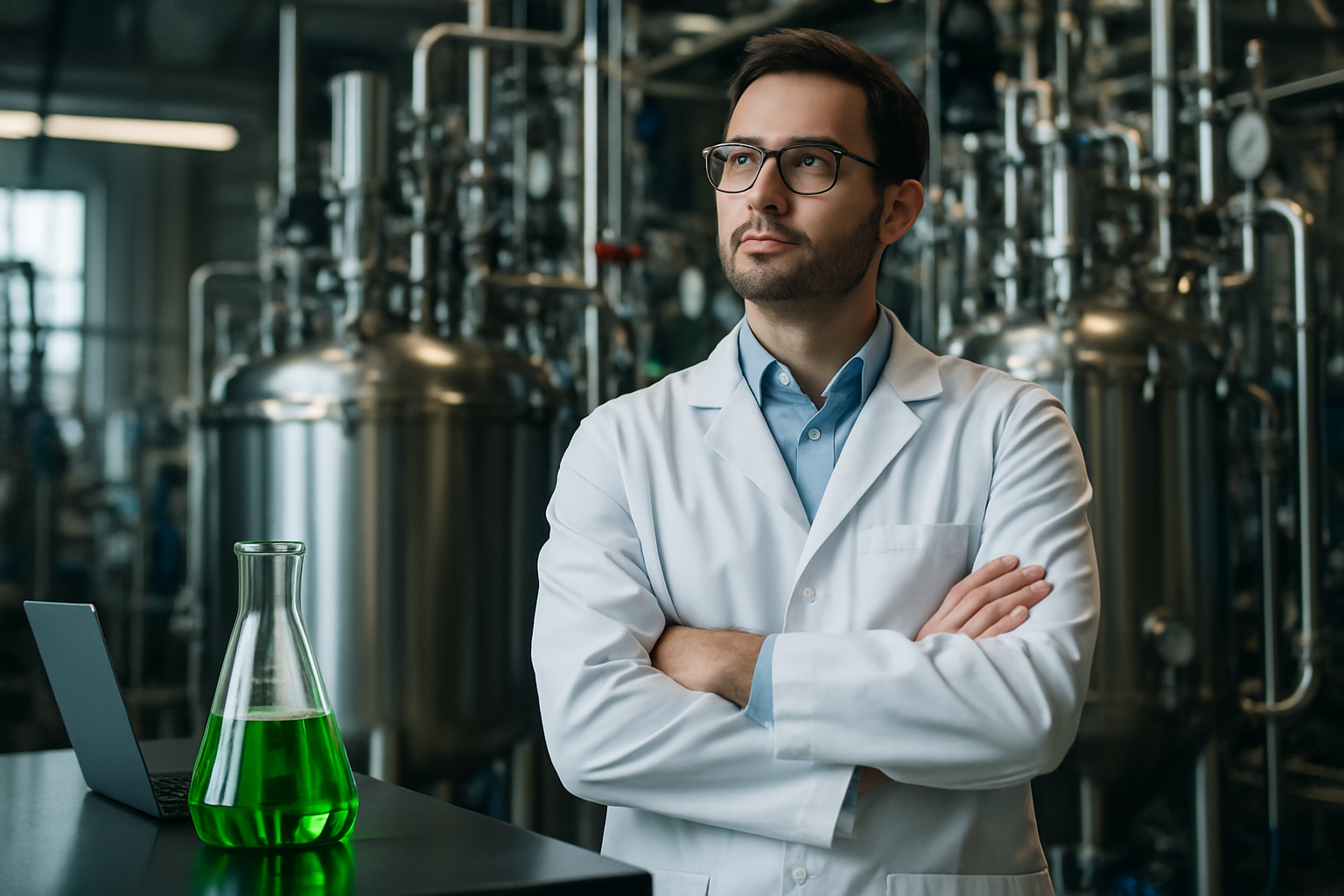Biocatalysts: Revolutionizing Industrial Chemical Production
Transforming chemical manufacturing through enzyme-driven processes is gaining momentum in industrial circles. Biocatalysts, nature's own chemical reactors, are emerging as powerful tools for sustainable and efficient production methods. This shift towards green chemistry is not just an environmental choice, but a strategic move that's reshaping the landscape of industrial chemical synthesis.

Historical Context of Biocatalysis
Biocatalysis has roots stretching back to ancient civilizations, where fermentation processes were used to produce bread and alcoholic beverages. However, the modern era of industrial biocatalysis began in the early 20th century with the production of acetone using Clostridium acetobutylicum during World War I. This marked the first large-scale industrial application of microbial fermentation.
The discovery of penicillin in 1928 and its subsequent mass production during World War II further propelled the field of biocatalysis. As understanding of enzyme function and genetic engineering advanced, the potential for biocatalysts in industrial applications expanded dramatically. By the 1980s and 1990s, engineered enzymes were being used in detergents, food processing, and pharmaceutical production.
Current Trends in Industrial Biocatalysis
Today, biocatalysis is at the forefront of green chemistry initiatives. Industries are increasingly turning to enzymatic processes to replace traditional chemical syntheses that often require harsh conditions and produce toxic waste. The pharmaceutical sector, in particular, has embraced biocatalysis for the production of complex drug molecules with high stereoselectivity.
One significant trend is the development of “designer enzymes” through directed evolution and protein engineering. These custom-made biocatalysts can perform reactions that are difficult or impossible with traditional chemical methods. For instance, engineered cytochrome P450 enzymes are now capable of catalyzing C-H bond functionalization, a historically challenging reaction in organic synthesis.
Impact on Chemical Manufacturing
The adoption of biocatalysts in chemical manufacturing has far-reaching implications. First and foremost, it allows for more environmentally friendly production processes. Enzymatic reactions typically occur under mild conditions—neutral pH, ambient temperature, and atmospheric pressure—reducing energy consumption and minimizing the use of harsh solvents.
Furthermore, biocatalysts often provide superior selectivity, leading to higher product purity and reduced waste. This not only improves the overall yield but also simplifies downstream processing and purification steps. In some cases, entire synthetic routes can be reimagined and shortened, leading to significant cost savings and reduced time-to-market for new products.
Challenges in Scaling Biocatalytic Processes
Despite the numerous advantages, scaling up biocatalytic processes for industrial production presents several challenges. Enzyme stability under industrial conditions is a primary concern. Many enzymes are sensitive to temperature, pH, and organic solvents, which can limit their applicability in large-scale operations.
Another hurdle is the cost of enzyme production and purification. While advances in recombinant DNA technology have made it possible to produce enzymes in large quantities, the process can still be expensive, especially for complex, multi-step enzymatic cascades.
Reactor design for biocatalytic processes also requires careful consideration. Unlike traditional chemical reactors, biocatalytic systems often involve multiphase reactions and may require specialized immobilization techniques to enhance enzyme stability and reusability.
Future Prospects and Innovations
The future of biocatalysis in industrial chemical production looks promising, with several exciting developments on the horizon. One area of active research is the creation of artificial metalloenzymes, which combine the catalytic power of transition metals with the selectivity and mild reaction conditions of enzymes.
Another frontier is the development of cell-free biocatalytic systems. These systems use purified enzymes or cell extracts rather than whole cells, allowing for greater control over reaction conditions and easier product separation. This approach is particularly promising for the production of fine chemicals and pharmaceuticals.
Advances in computational biology and machine learning are also accelerating the discovery and optimization of novel biocatalysts. These tools allow researchers to predict enzyme function and engineer improvements with unprecedented speed and accuracy.
Key Insights for Industrial Implementation
• Conduct a thorough assessment of current chemical processes to identify potential biocatalytic replacements
• Invest in R&D partnerships with academic institutions specializing in enzyme engineering
• Consider developing in-house expertise in biocatalyst production and immobilization techniques
• Implement pilot-scale testing facilities to de-risk the transition to biocatalytic processes
• Explore opportunities for enzymatic cascades to simplify complex multi-step syntheses
• Stay informed about advancements in synthetic biology and their potential industrial applications
As industries continue to seek more sustainable and efficient production methods, biocatalysis stands out as a transformative technology. By harnessing the power of nature’s own chemical factories, manufacturers can reduce their environmental footprint, improve product quality, and potentially uncover new synthetic pathways previously thought impossible. The journey towards widespread adoption of biocatalysts in industrial chemical production is well underway, promising a greener and more innovative future for the sector.





